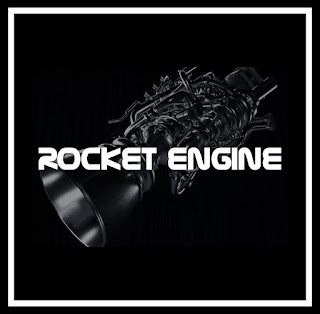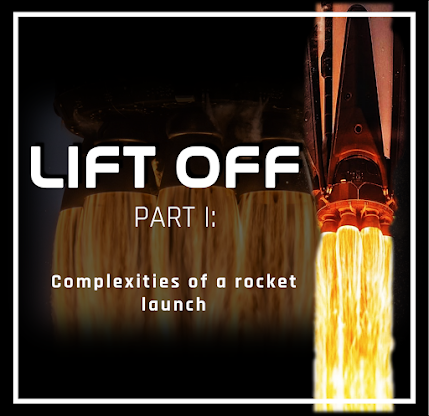ROCKET ENGINE: HEART OF THE ROCKET (Part 2)

THE HEART OF THE ROCKET - PART: 2
The most complex piece of engineering.
The last thing we learnt was nozzles. But how does the fuel get there? The sequence goes something like this. The fuel and the oxidizer from the fuel tank and the oxygen tank enters the rocket engine through heavy-duty premium built quality pipes. These pipes take the fuel through a turbopump (More about them, later). Then the fuel and the oxidizer goes down through various pipes into the injector. The injector mixes both fluids in some specific ratio and drops them down into the Combustion Chamber. This is where the wildest stuff takes place.
COMBUSTION CHAMBER
Hell reinvented on Earth
It is the part of the engine where the mixture of fuel and the oxidizer is ignited and set out through the nozzle. This portion is a thick cylindrical chamber with a relatively narrow end in which both the fluids ignite. This ignition is sparked by a Solid Rocket Motor Igniter. It utilizes an electrical input stimulus that ignites an Electro-Explosive Device (EED), which in turn ignites the propellant fluid. This closet holds the highest pressure in the whole process. Like very very high pressure. Therefore, to convert that pressure into velocity we have the concept of Expansion Ratio.
Expansion Ratio:
It is the ratio of the Area of the Throat to the Area of the Nozzle Exit. Nozzle's job is to convert High speed into High-speed exhaust gas. Since, we know the fact that the faster the engine throws the propellant, the better the engine. To convert the high pressure of the combustion chamber into thrust, you need to choke the flow until the exhaust gas achieves supersonic speed (speed more than the speed of sound). Therefore you narrow the exit until the gas achieves a velocity of more than 330metres/second.
Now you want to speed the burning lava more, you need to expand the length of the nozzle. A series of mathematical expressions result in the paraboloid (3D parabola) shape of the nozzle. So, supersonic flow is weird, so after that longer your nozzle is, the faster it accelerates the propellant. Each and every millimetre that nozzle expands is a chance for the exhaust to accelerate more and more and it's an opportunity for the exhaust to push against the rocket. Hence efficiency increased!
Usually, the Sea level rocket engines have an expansion ratio of 1:38 while the space-optimized (engines meant to work in space) has an expansion ratio above 1:100. In simple terms, the Nozzle exit is 100 times bigger than the opening of the nozzle. So the high pressure burning gas in the combustion chamber has to contract to again increase its pressure and then expand its volume quickly and that's how complicated the process is.
SPECIFIC IMPULSE:
Just another term for efficiency
NET THRUST:
A nerd or any science student must be aware of this equation but in parts.
F = m.(dv/dt) and P = F/A
Simple mathematical forms joined to form a simple thrust equation for rockets. Though it isn't as simple as it looks. It involves integration as the mass of the rocket varies every single millisecond. Since the fuel and oxygen are burnt, the mass is constantly decreasing. However, you need to maintain the pressure of the vessel as the atmospheric pressure decreases as you go up. If the pressure inside the tanks drops, they may crumble like a soda can and eventually the whole structure pops. A serious threat to be considered. The pressure at the nozzle exit must be maintained at 1 bar. As mass constantly decreases, the exhaust velocity has to be varied accordingly to maintain the thrust. Therefore the thrust is a damn difficult calculation.
Seems like a lot of stuff in a day's time. I hope you liked the stuff. We'll meet again in the next article in which we'll end this trilogy of Rocket Engine and dive into specific and interesting topics. Till then, follow for regular updates, comment down your thoughts and stay tuned for upcoming posts.
Thank you for reading ;)
Thank you for reading ;)
B-bye...







NET THRUST is the force on which the rock is lifted so
ReplyDeleteF = mv means force is equal to momentum lol what are u saying man
F = mv in this v is the derivative of velocity which is acceleration
then it becomes f=ma
first understand the formula lol
Oh, I am absolutely sorry, I mis typed it... I totally missed the fact in hurry... I have corrected my mistake. Thank you for pointing out :)
DeleteHey, good job bro... Keep updating :)
ReplyDeleteNice work beta 😘
ReplyDelete